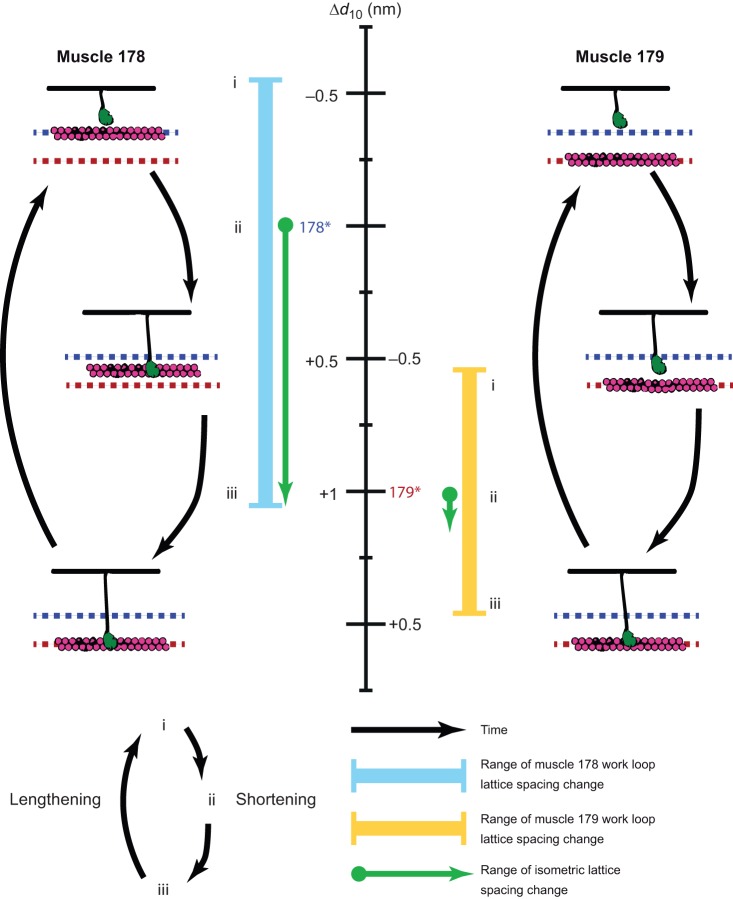Fig. 8.
Lattice spacing has larger dynamic transients in muscle 178 than in muscle 179. Crossbridge schematics on the left and right indicate lattice spacing at different times during a cyclic contraction (i.e. work loop conditions). Times represented by i, ii and iii correspond to the start of shortening (stimulation occurs right after onset), mid-way through shortening, and the transition from shortening to lengthening, respectively. Right before stimulation (i), muscle 178's lattice spacing is tighter (blue dashed line) than muscle 179's (red dashed line). During activation (ii), muscle 178's lattice spacing increases until it reaches the red dashed line (iii), while muscle 179's does not significantly change (see Fig. 3). The muscles then relax during lengthening and the cycle repeats. The central scale bar shows the change in lattice spacing compared with the mean passive lattice spacing at rest for each muscle (indicated by 178* and 179*). These are offset because of the passive differences in the muscle. The green arrows indicate the range of lattice spacing under isometric activation and show that the initial lattice spacing difference disappears at steady state. Both muscles undergo lattice spacing change during periodic contractions because of axial length change. However, muscle 178 has a 0.82 nm larger range in lattice spacing (cyan line) during periodic contractions compared with muscle 179 (yellow line) because of the addition of activation-dependent lattice spacing. Lattice spacing arises from a balance of radial forces from many potential sources, including crossbridges and other sarcomeric proteins (e.g. titin and titin-like molecules; Dutta et al., 2018). Both the amount of force that is generated axially and radially by crossbridges and crossbridge binding rates are dependent on the lattice spacing (Schoenberg, 1980; Williams et al., 2010). These influences could enable even a 1 nm difference to have the potential to drive differences in a muscle's mechanical work output, but we must further explore causal mechanisms.

